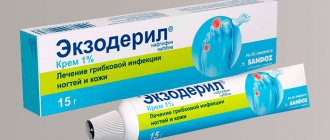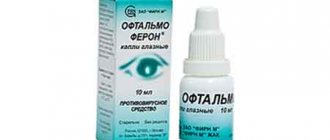Drug interactions
Against the background of the effects of sleeping pills, anxiolytics, neuroleptics, antidepressants, and anesthetics, Omnopon should be used in reduced doses and under close medical supervision.
Combined use with narcotic analgesics from the group of partial agonists (buprenorphine, tramadol) and opioid receptor agonists-antagonists (nalbuphine, butorphanol) is not recommended, as it is associated with the risk of weakening analgesia and increasing the likelihood of developing withdrawal syndrome.
When Omnopon is used simultaneously with opioid agonists (promedol, fentanyl), the analgesic effect is enhanced, and the likelihood of developing undesirable effects increases.
How addiction occurs
The instructions for use include mental and physical dependence, withdrawal syndrome and other effects that cause poisons (nausea, vomiting, etc.) as side effects. The instructions also warn about the possibility of addiction. Like other opioid drugs, Omnopon causes severe addiction and painful withdrawal symptoms upon withdrawal. At first, the withdrawal syndrome manifests itself as a cold: stuffy nose and so on, diarrhea may occur. And with longer use, severe pain, panic attacks and other symptoms occur.
Signs of Abuse
It is impossible to consume poisons without visible consequences. So, the signs of omnoponovoy drug addiction will be:
- inhibited thinking (slow to think);
- poor coordination of movements;
- inappropriate behavior and conversations;
- sleep problems;
- mood swings;
- loss of interest in family affairs and usual hobbies, change in circle of friends.
Release form and composition
Dosage form of Omnopon - 1% or 2% solution for subcutaneous administration: clear liquid, colorless or pale yellow (1 ml in an ampoule, 5 ampoules in a blister pack, 1 or 2 packs in a cardboard box; for hospital use - in a cardboard box pack of 20, 50 or 100 packages).
Composition of 1 ml solution:
- Active ingredients: 1% and 2% solution (respectively) – narcotine – 2.7 and 5.4 mg; morphine hydrochloride – 5.75 and 11.5 mg; papaverine hydrochloride – 0.36 and 0.72 mg, codeine – 0.72 and 1.44 mg, thebaine – 0.05 and 0.1 mg;
- Additional components: glycerin (glycerol), disodium salt of ethylenediaminetetraacetic acid (disodium edetate), water for injection, 1M hydrochloric acid solution.
Contraindications
Absolute:
- Convulsive states;
- Respiratory disturbances or severe depression of the central nervous system;
- Increased intracranial pressure;
- Traumatic brain injury;
- Paralytic ileus;
- Bronchial asthma;
- Cardiac arrhythmias;
- Heart failure caused by chronic lung diseases;
- Condition after surgical interventions on the biliary tract;
- Undiagnosed acute surgical lesions of the abdominal organs;
- Combination with monoamine oxidase inhibitors, as well as a period of 14 days after their discontinuation;
- Age up to 2 years;
- Hypersensitivity to the components of the product.
Relative (used with extreme caution due to the high likelihood of adverse reactions): general exhaustion, adrenal insufficiency, kidney/liver damage, advanced age, a history of opioid addiction.
During breastfeeding, pregnancy and childbirth, the drug can be used only in extreme cases for health reasons, due to the possible development of drug dependence in the fetus/newborn.
Directions for use and dosage
Omnopon is administered subcutaneously.
Doses are prescribed individually depending on the severity of the pain syndrome, condition and age of the patient. Adults are usually administered 1% or 2% solutions in a dose of 1 ml; if necessary, the product can be reused after 4-5 hours. The maximum permissible daily dose is 100 mg (5 ml of 2% solution or 10 ml of 1% solution), the maximum single dose is 30 mg (1.5 ml of 2% or 3 ml of 1% solution).
Recommended doses for children and adolescents, taking into account the required degree of pain relief and general condition, can vary from 1 mg (for children 2-3 years old) to 7.5 mg (for adolescents 12-14 years old).
Overdose information
Are too large doses of Omnopon solution dangerous? The instructions contain information and possibilities of overdose. This condition is accompanied by a sharp decrease in blood pressure. Respiratory depression is also observed. Using too large a dose of the drug can lead to coma.
Patients with such symptoms should be urgently taken to a medical center. The specific antagonist is Naloxone, which is administered intravenously. The doctor's task is also to maintain normal pulmonary ventilation.
Indications for use
Omnopon is used for severe pain of various origins of a chronic or acute nature: trauma, post-traumatic pain, myocardial infarction, malignant neoplasms, preparation for surgery, the postoperative period, and other similar conditions.
In combination with atropine-like drugs or antispasmodics of myotropic action, Omnopon is used to relieve pain in renal, hepatic, and intestinal colic.
Is it always safe to take this drug? Description of possible complications
In most cases, the treatment is well tolerated. But the possibility of side effects cannot be ruled out.
- In some cases, treatment is associated with reactions from the nervous system. The drug may cause drowsiness or, conversely, agitation. The list of adverse reactions includes euphoria, dizziness, hallucinations, and depression.
- The medicine may cause muscle weakness.
- Since the drug affects smooth muscles, various urination disorders, as well as persistent spasms of the bladder sphincter, are possible during therapy.
- The administration of the medication may cause disturbances in the digestive system. Patients often complain of constipation. That is why laxatives are often included in the treatment regimen.
- Other complications include allergic reactions of various types, increased intracranial pressure and exacerbation of existing brain diseases, spasms of the biliary tract.
It is also worth saying that long-term use of such a powerful drug is often accompanied by the development of dependence with the further appearance of withdrawal syndrome. That is why the drug must be used very carefully.
Treatment of addiction to omnopon
Pharmacy addiction is treated the same as any other. We recommend the following scheme:
- Inpatient treatment to help overcome withdrawal symptoms and treat physical illnesses that may have developed as a result of use. Some narcologists advise UBOD (removal of withdrawal symptoms under anesthesia) or other methods using potent drugs. We recommend that you refrain from such methods, since any medicines (like drugs) are essentially poisons that destroy.
- Rehabilitation according to a good program that takes into account different aspects of addiction. With the help of the Narconon program, it is possible to return a person to the good state that he had before using it. The influence of drugs extends to emotions, thoughts, and mind, and these things cannot be corrected by antidepressants or psychotropic pills.
Learn more about the Narconon program and call us to help you overcome any addiction!
Share:
Drug Jeff
Drug ketamine
Reviews from patients and opinions of specialists
In modern medicine, the medicine “Omnopon” is widely used. Instructions, reviews, analogues - this is the information that is worth reading. In fact, experts have a good opinion about this drug. Subcutaneous injections really help relieve pain, even if we are talking about severe, severe pain. In addition, the medicine has antispasmodic properties.
Despite the truly impressive list of adverse reactions, actual complications are recorded extremely rarely. Patients note that relief occurs almost instantly - a few minutes after the injection, the pain subsides. These factors make the medicine so popular.






